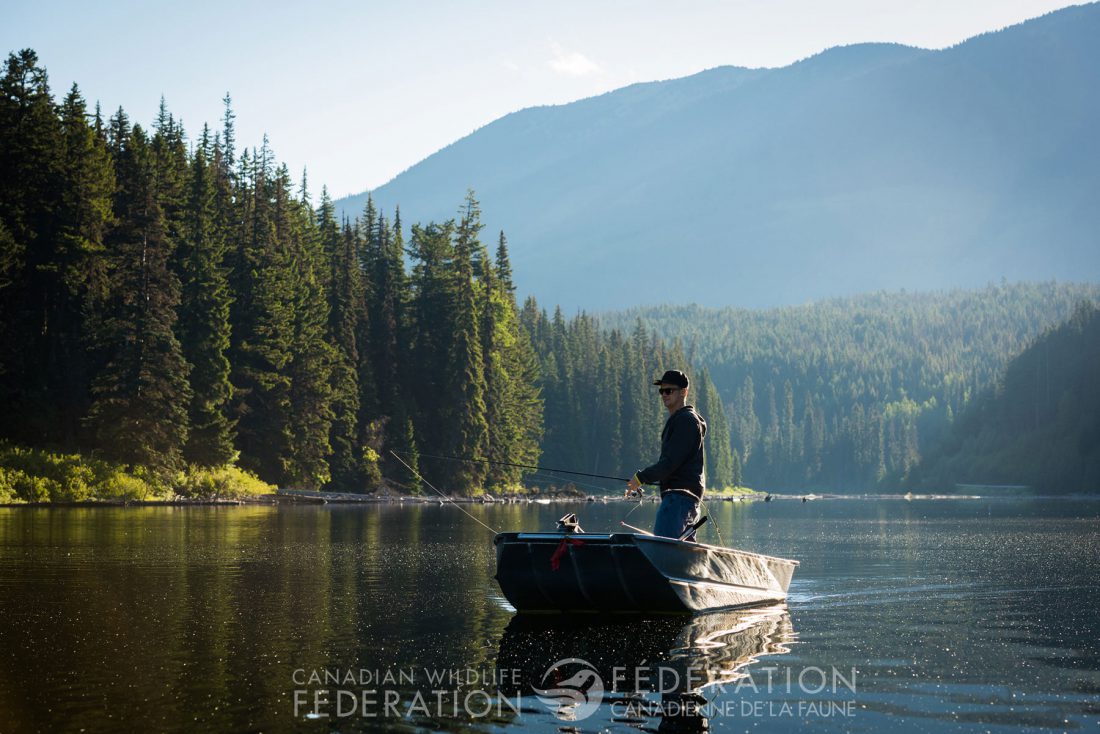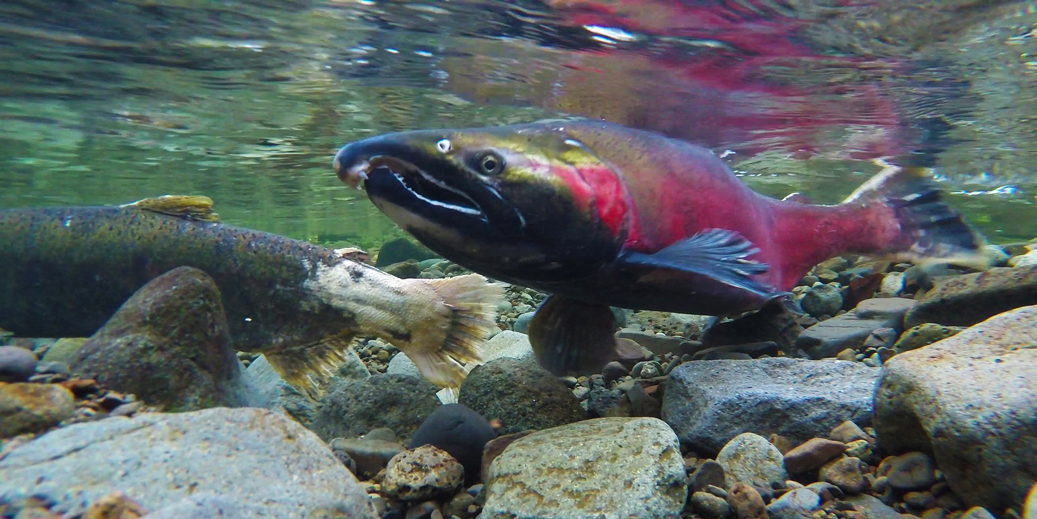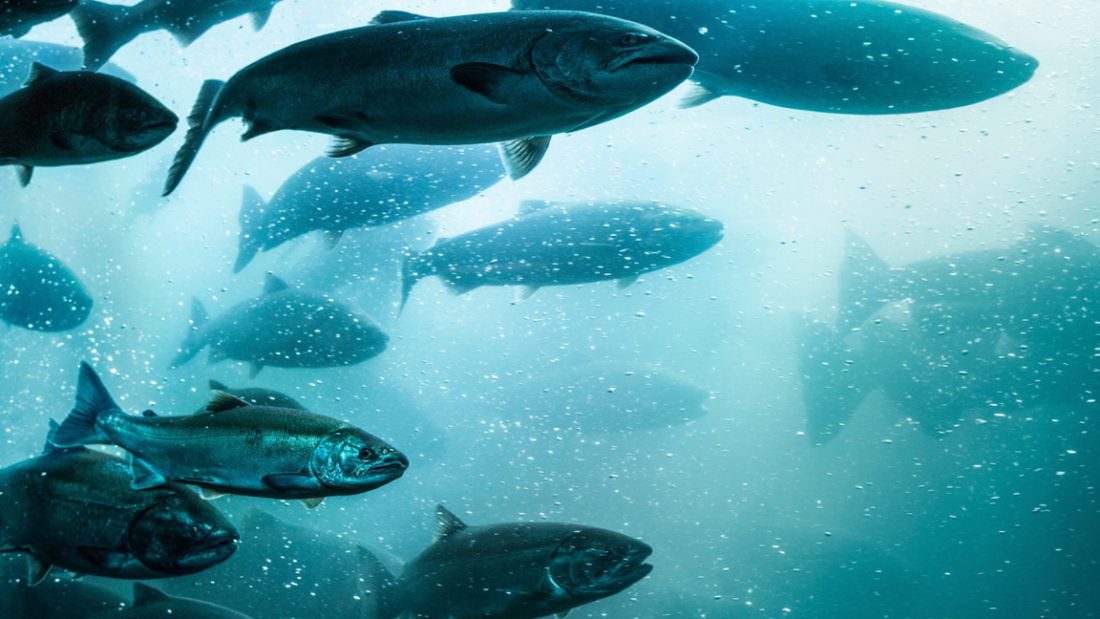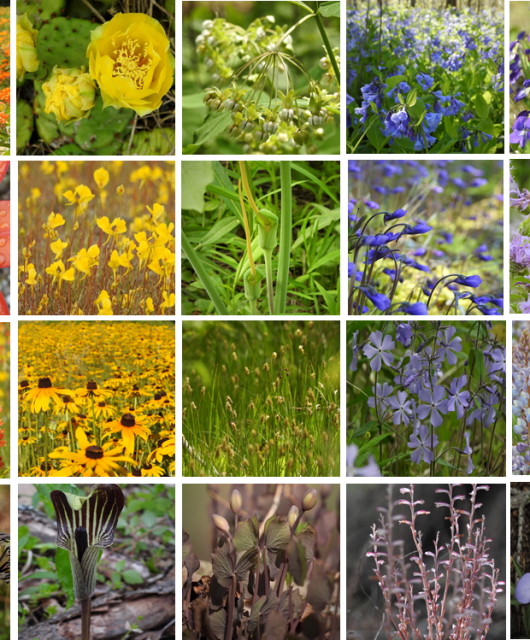Canada’s Fisheries Act has now been re-jigged and cast to the Senate for final review before becoming law.
While that’s something to celebrate, there are still a few lines that need to be strengthened to ensure the conservation of fish and their habitats. The Canadian Wildlife Federation applauds the changes to the Fisheries Act which passed third reading in the House of Commons on June 19.

The top improvements include:
- Reinstating the long-standing prohibition against the harmful alteration, disruption or destruction of fish habitat
- Protecting all fish species
- Expanding the protection of fish habitat to include water quality and quantity
- Requiring actions to rebuild fish stocks that have declined significantly
CWF is also pleased that some important provisions added in 2012 will be retained, such as prohibiting activities that cause harm to fish habitat and regulations designed to deal with aquatic invasive species.

The Good Catch
Bill C-68 significantly modernizes the protection of fish habitat by recognizing that water quality and quantity, including the timing of changes to water flows, are part of fish habitat. Previously, the protection of fish habitat was focused on the area of things like sand, rock, gravel, mud, reef, or aquatic vegetation used by fish for spawning and feeding grounds.
But fish live in a three-dimensional world, and cannot use spawning habitat if it is not covered with the right amount of clean water at the right time of year. This important change to the federal Fisheries Act better aligns the definition of fish habitat with how scientists (and fish) understand habitat.

The Better Net
Another important improvement to the Act is the creation of a public registry to improve transparency for projects authorized under the Fisheries Act. This will help hold proponents accountable, including developers, mining companies, forestry companies, municipalities and others that impact fish habitat.
This amendment will also let stakeholders know what steps are being taken to reduce harm and compensate for any unavoidable destruction or alteration of fish habitat.
While these are great improvements, the public registry will not cover hundreds of other projects that occur each year that cause harm but don’t receive an authorization and thousands of projects that have the potential to cause harm if best practices are not followed.
CWF cautions that all projects with the potential to cause harm should be registered so that the Department of Fisheries and Oceans (DFO) and concerned citizens can verify that best practices are being followed. This is also critical to monitoring changes to fish habitat over time.
CWF is also concerned about the lack of clarity on how the cumulative effects of small projects will be handled under the amended Fisheries Act. When all of these projects are added together, the cumulative harm to fish habitat can be massive in some areas. Many of our urban rivers and streams are in trouble precisely because of this type of death by a thousand cuts.
Yet under Bill C-68, how the impacts of small or “low-risk” projects will be dealt with has been left to the future development of new regulations. It remains unclear how these regulations will work, and CWF is concerned that small but harmful projects will continue to accumulate in our watersheds without a plan to address their combined impacts.
CWF is proposing amendments to Bill C-68 that would allow small projects that alter or destroy fish habitat to be registered online and receive a permit along with an outline of best management practices which must be followed. As part of the permit, those undertaking small projects would buy credits from a habitat bank or pay a fee to support large-scale restoration projects in the same area that would offset harm and provide net benefits for fish and fish habitat.
The Extended Line
Connectivity is another key element of fish habitat that is not clearly addressed under the Fisheries Act.
Fish use different habitats during different seasons and life stages, and need to be able to move between these areas to thrive or sometimes even survive. Though changes have been made to provisions governing fish passage, the fundamental approach has not changed.
It remains at the discretion of Canada’s Minister of Fisheries and Oceans whether to require fish passage, such as a fish ladder, at any project that obstructs fish movement. This discretion has rarely been exercised in the past. For instance, only two per cent of dams in Ontario provide a fish passageway.
More clarity is needed about how fish passage will be restored and maintained under the amended Fisheries Act.

The Reel Deal
Canada’s Fisheries Act is much improved but still needs to reel in a few big fish.
CWF supports efforts by the Senate and the Government of Canada to modernize the Fisheries Act by passing Bill C-68. As they do, we call on them to provide clarity on how it will protect and restores fish passage and address the cumulative effects of small projects that destroy fish habitat.





1 comment
I like your news and tips. BUT: please tell people to look at the source of their olive oil: Spain and Portugal have horrible mechanical harvesting machines that destroy millions of birds! Please warn the public about this. I received the information from Nature Conservancy, and sent it on to the World Wildlife association, but haven’t seen anything in the general news media, warning about this. Thank you.